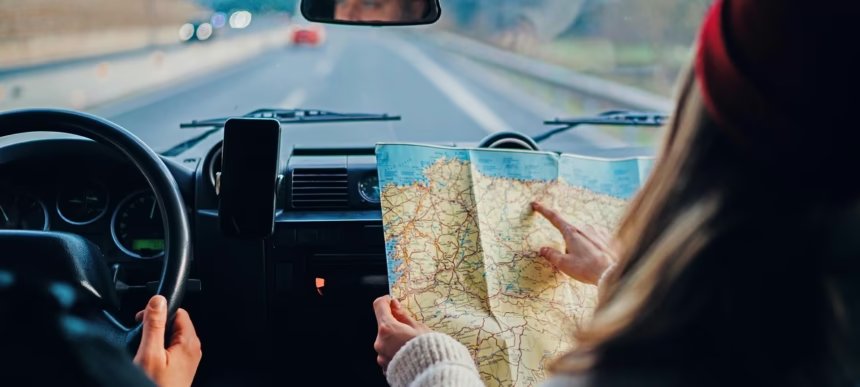Canada is the second-largest country in the world, and with its vast landscapes, diverse regions, and well-maintained roadways, it’s tailor-made for a self-drive holiday. Whether you’re craving snow-capped mountains, serene lakes, vibrant cities, or sleepy coastal towns, a Canadian road trip gives you the freedom to explore it all—at your own pace. Planning the perfect self-drive holiday across Canada takes a little thought and a lot of enthusiasm, but with the right steps, your trip can be unforgettable.
Choose Your Route Wisely
With vast and varied geography, one of the most crucial steps in planning self drive Canada holidays is choosing a route that matches your interests, schedule, and travel style.
If you’re after mountain views, the Icefields Parkway between Banff and Jasper in Alberta offers jaw-dropping alpine scenery and is often considered one of the world’s most scenic drives. For coastal charm, explore Nova Scotia’s Cabot Trail or drive through Prince Edward Island. Want to embrace urban and cultural experiences? You might plan a drive that takes you from Toronto through Montreal and onward to Quebec City for a blend of urban culture and historic charm.
Each route has its own flavor. Decide whether you’re interested in nature, cities, culture, or a combination of everything. Google Maps is a great tool, but so are specialized road trip planning apps that include attractions, accommodations, and even fuel stops.
Pick the Right Vehicle
Choosing the right vehicle is essential for a successful self-drive holiday. If you’re traveling across long distances with lots of gear or passengers, consider an SUV or even a campervan. If you’re sticking to cities and highways, a smaller car might offer better fuel efficiency and easier parking.
If you’re traveling through mountain regions or driving in winter, it’s wise to choose a vehicle equipped with all-wheel drive for better traction and safety. Most rental companies in Canada offer a wide selection of vehicles suited for various terrains and seasons. Make sure you’re comfortable with the car’s features before hitting the road—especially if you’re from a country where you drive on the other side.
Time It Right
The time of year you choose for your self-drive holiday in Canada can significantly shape your experience. Summer (June to September) is the most popular and arguably the easiest season to drive—roads are clear, attractions are open, and weather is mild. However, this also means more tourists and higher accommodation costs.
Fall (late September to October) is ideal for leaf-peeping, particularly in eastern Canada, while spring offers blooming landscapes and fewer crowds. Winter can be magical with snow-covered scenes, but it requires caution, proper tires, and driving experience in icy conditions. Plan accordingly and always check weather forecasts.
Book Accommodations in Advance
While spontaneity is part of the charm of self-drive holidays, it’s wise to book key accommodations ahead of time—especially in popular tourist regions or during peak season. Canada has a variety of lodging options ranging from luxury resorts and charming B&Bs to motels and campgrounds.
If you’re traveling in a campervan, make reservations at national or provincial parks, as spots can fill up quickly. Apps like Booking.com or Airbnb are handy for flexible, on-the-go planning. A good mix of pre-booked and open nights lets you enjoy both structure and freedom.
Pack Smart and Stay Safe
Because Canada’s landscapes and weather patterns can shift rapidly, it’s essential to be prepared for different conditions. Summer days might still bring chilly evenings in higher altitudes or near lakes and rivers. Pack layered clothing, sturdy shoes, sun protection, insect repellent, and a reliable GPS or physical map in case you’re out of range.
Don’t forget essentials like a first-aid kit, flashlight, phone charger, spare tire, and plenty of water and snacks. If you’re venturing into remote areas, make sure someone knows your route and check in regularly.
Embrace the Local Culture
One of the greatest joys of self-drive Canada holidays is discovering small towns, local eateries, Indigenous heritage sites, and off-the-beaten-path experiences that you’d likely miss on a guided tour. Stop for fresh blueberry pie in Nova Scotia, attend a powwow in Manitoba, or explore artist communities in British Columbia.
Be respectful of local customs and nature. Many of Canada’s regions are home to fragile ecosystems and sacred Indigenous lands. Follow Leave No Trace principles and adhere to posted signs and park regulations.
Fuel Up—Literally and Figuratively
Travel distances in Canada may seem shorter than they actually are, and fuel stops can be scarce in remote regions. Always fill your tank when you have the chance, especially before heading into remote regions. On a related note, give yourself permission to stop often—not just for gas, but for roadside attractions, photo ops, hiking trails, or local bites.
Driving for hours through untouched wilderness, or beside massive lakes and ancient forests, is one of the best parts of the trip. Build in time for detours—you won’t regret it.
Conclusion
A self-drive holiday across Canada is more than just a trip—it’s a journey of discovery, freedom, and connection with nature and culture. From majestic mountain passes to peaceful prairies and lively cities, every turn in the road has something new to offer. With the right planning, vehicle, and mindset, you can create your perfect Canadian adventure—one kilometer at a time. So grab your keys, map your route, and take the wheel. Canada is waiting.


